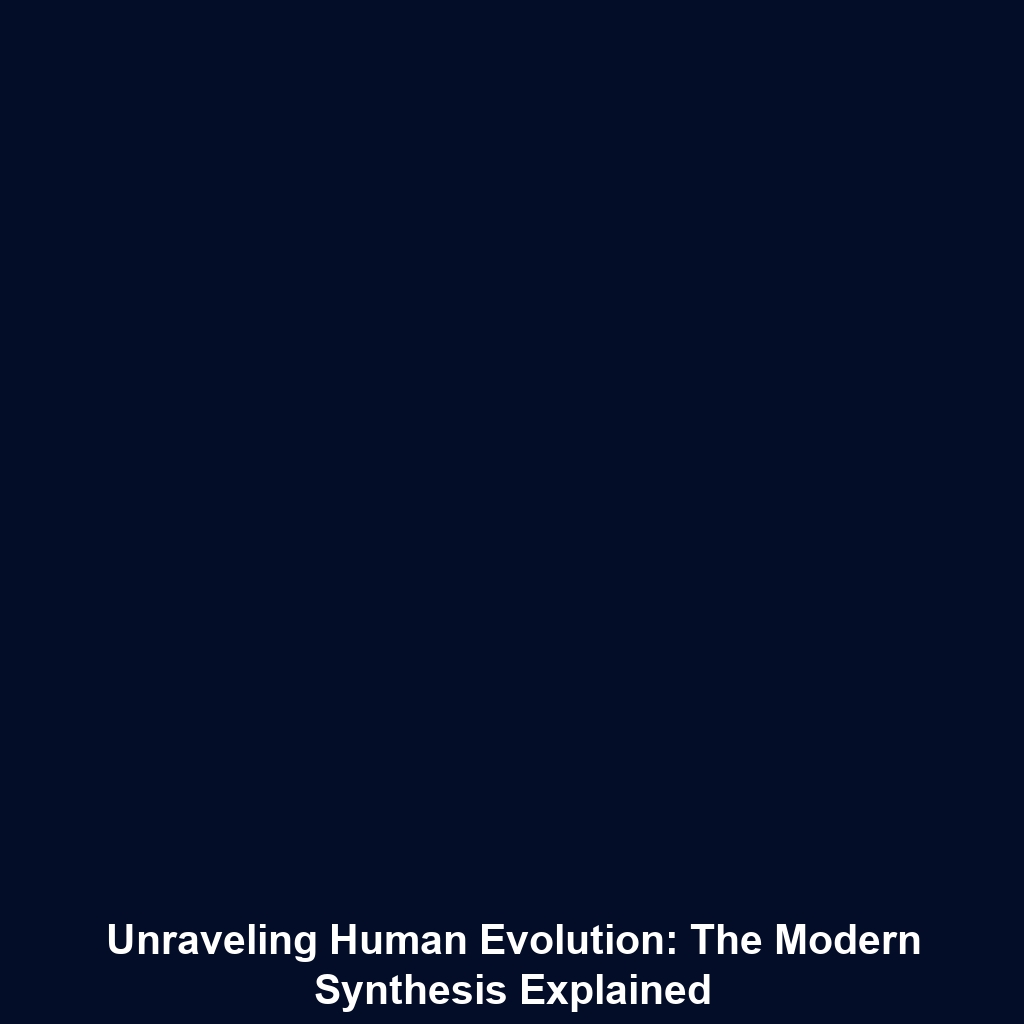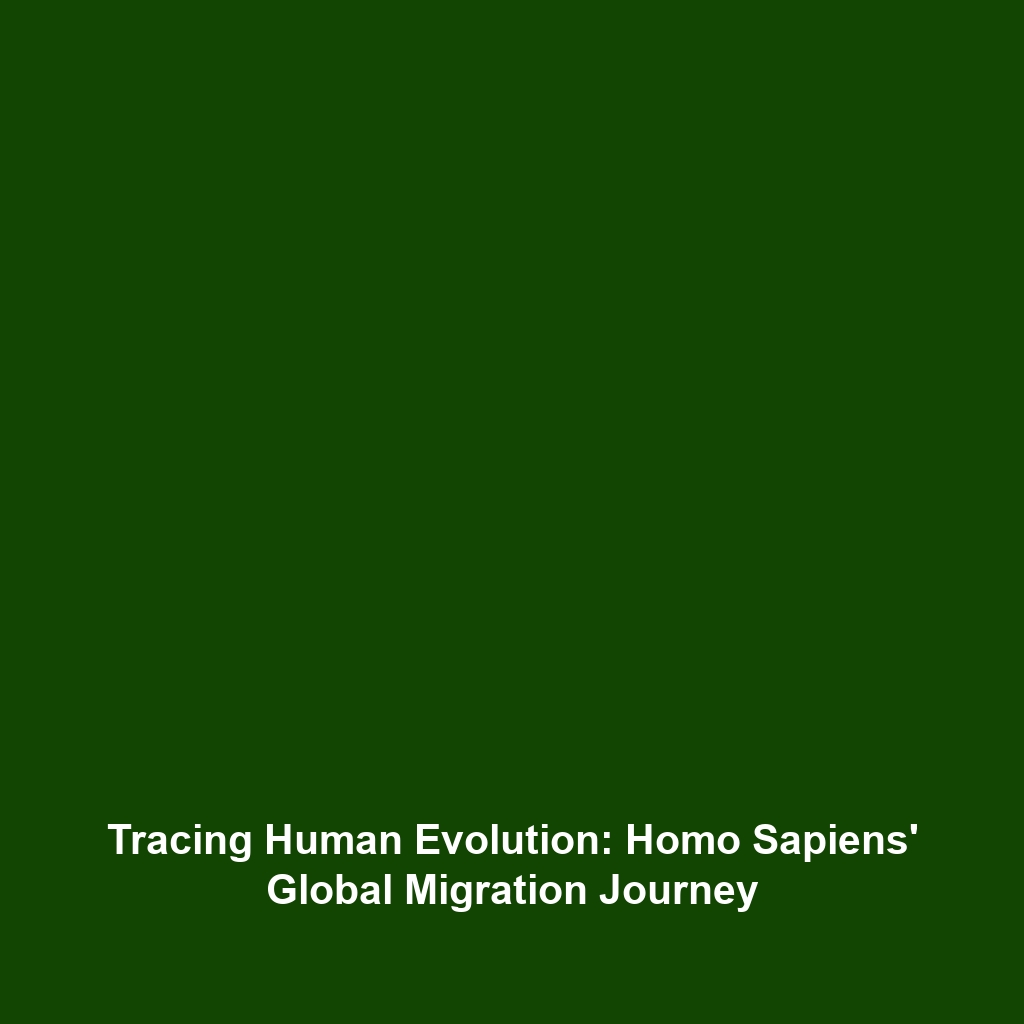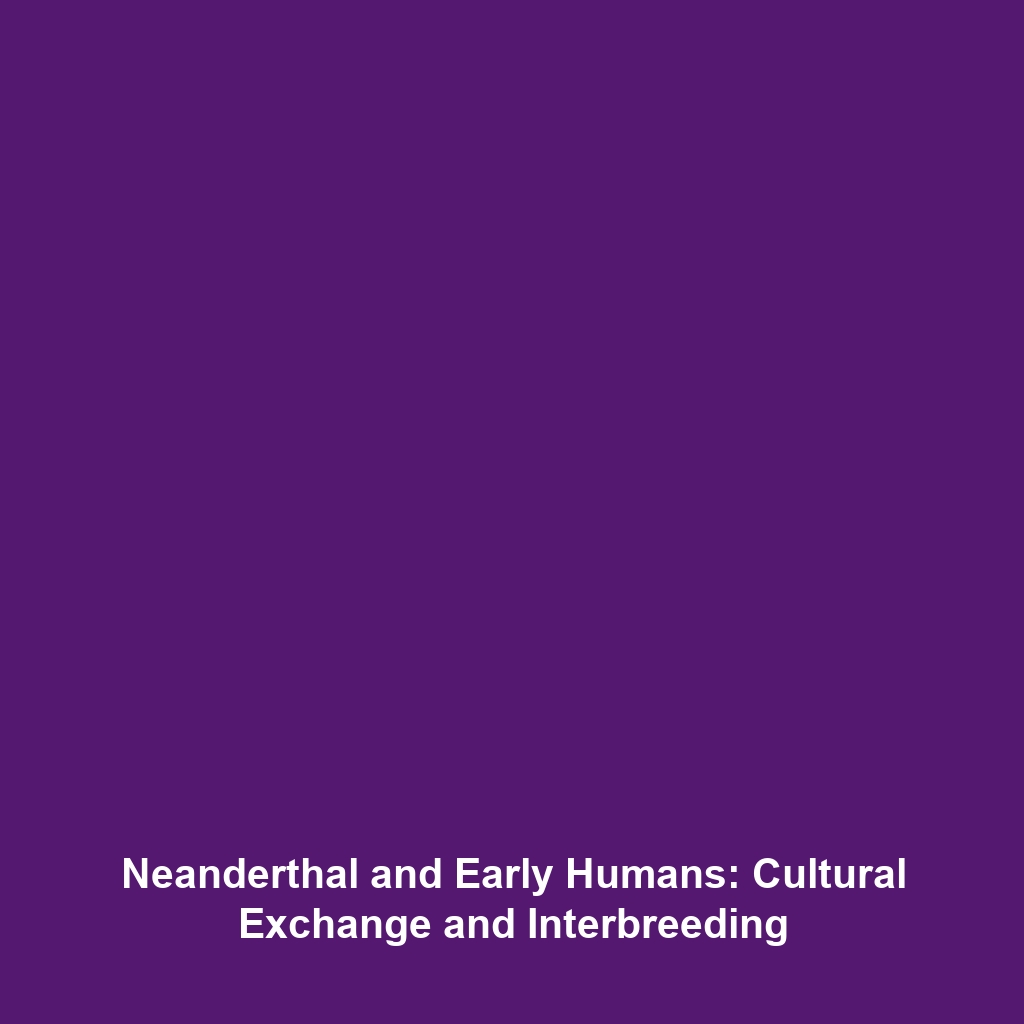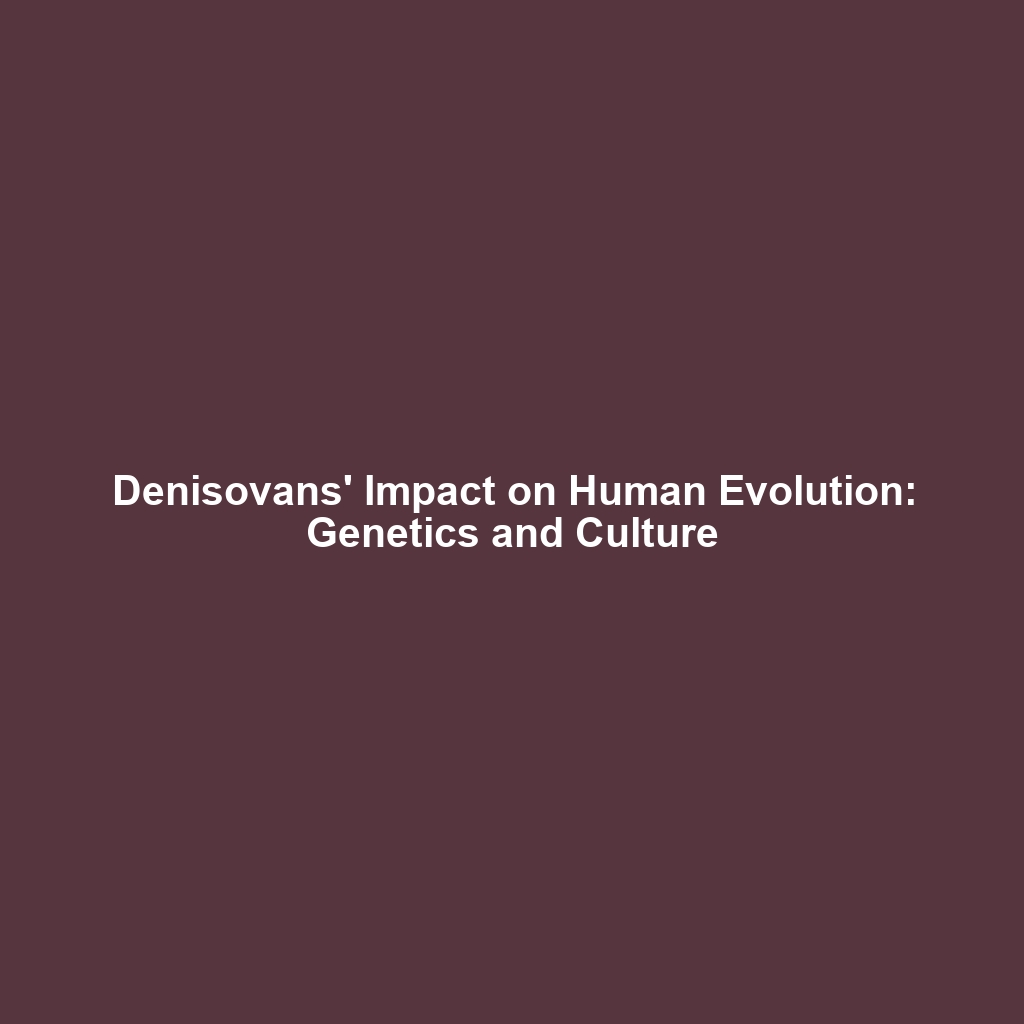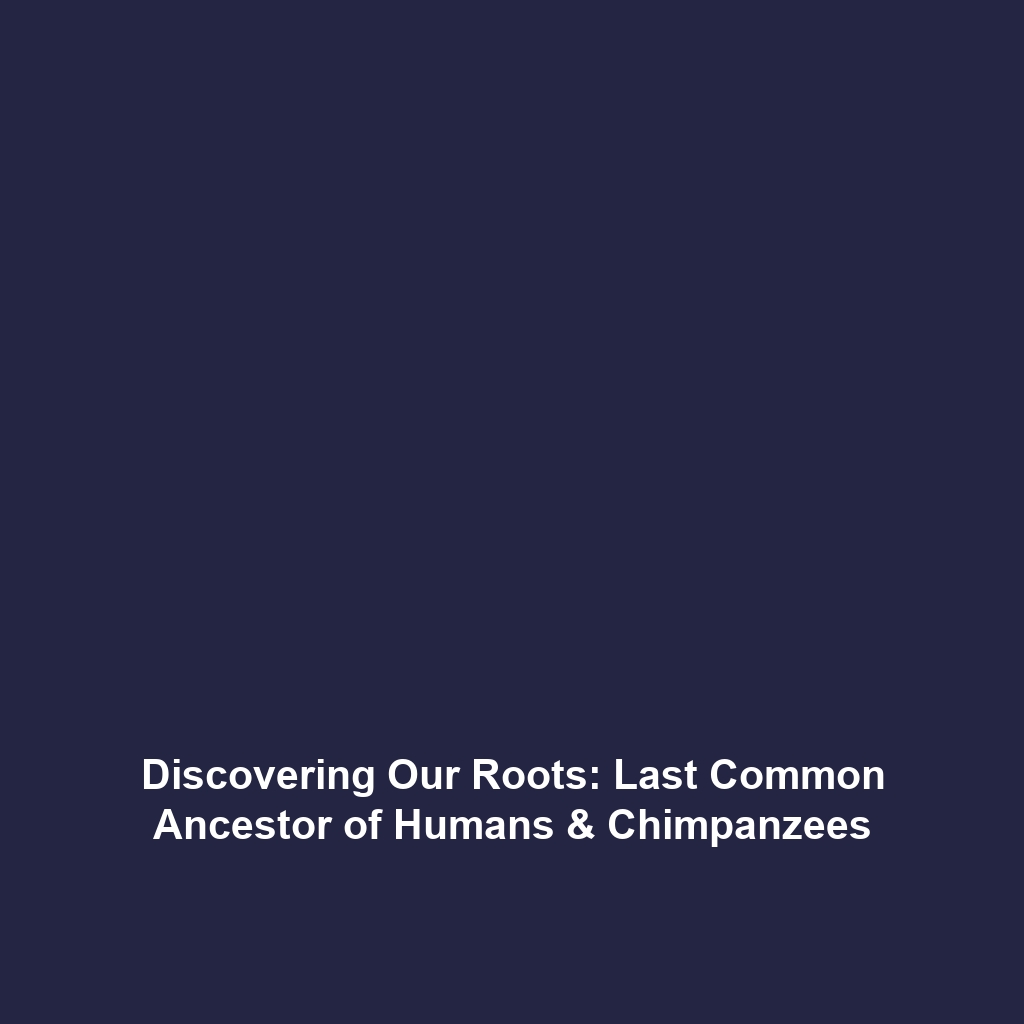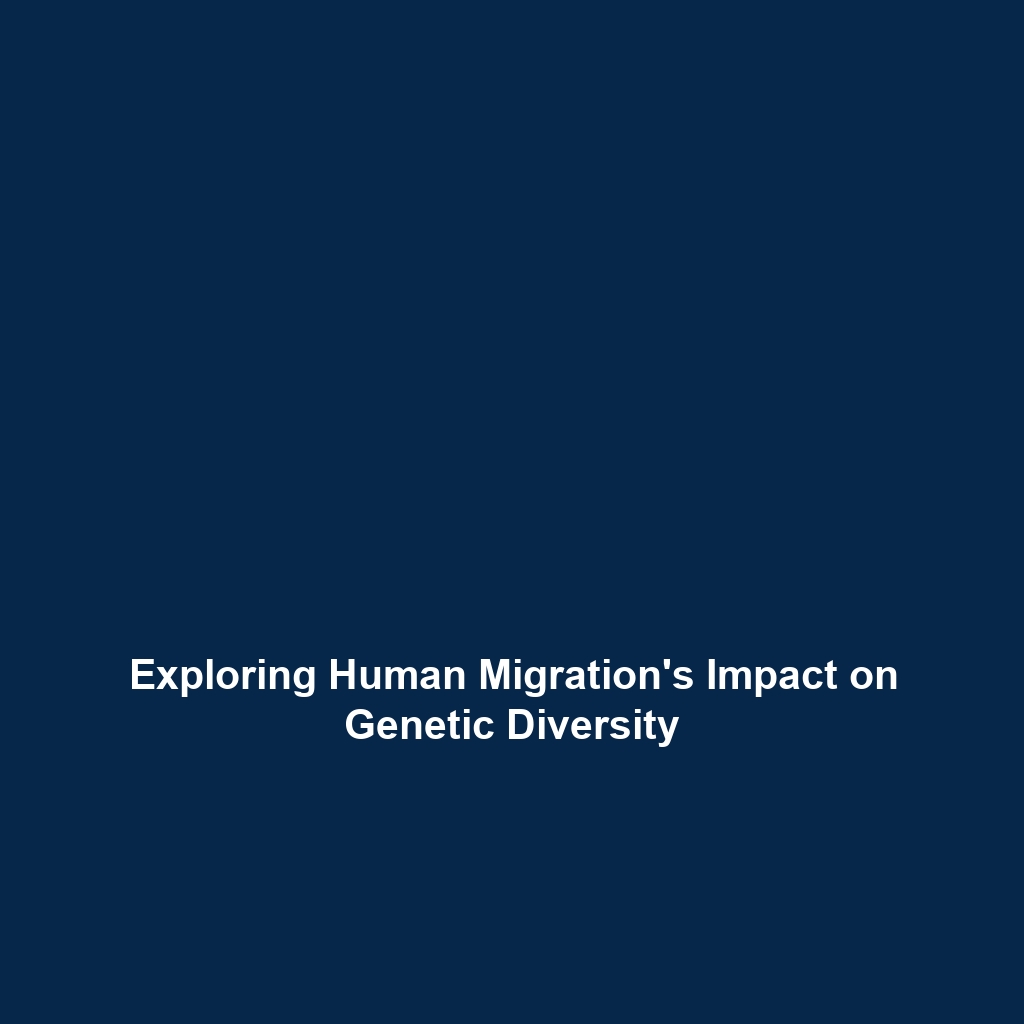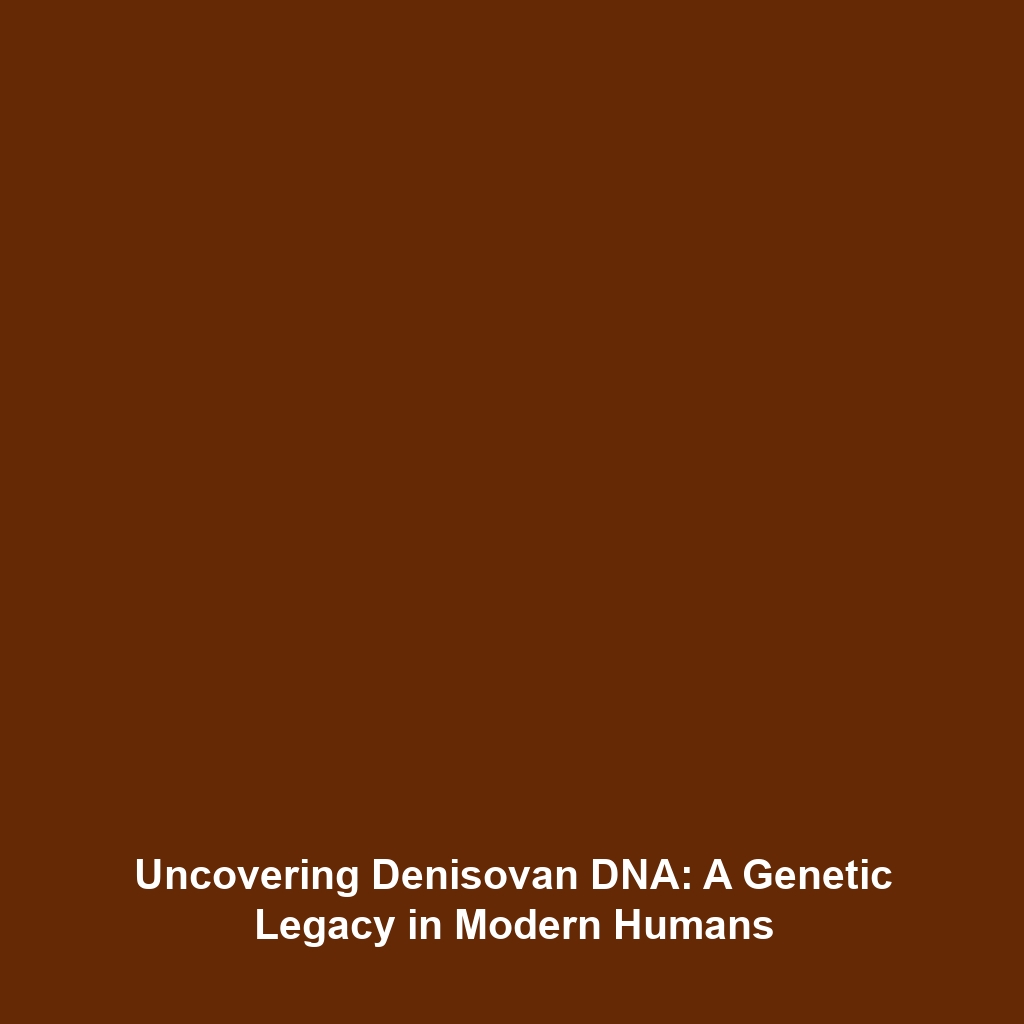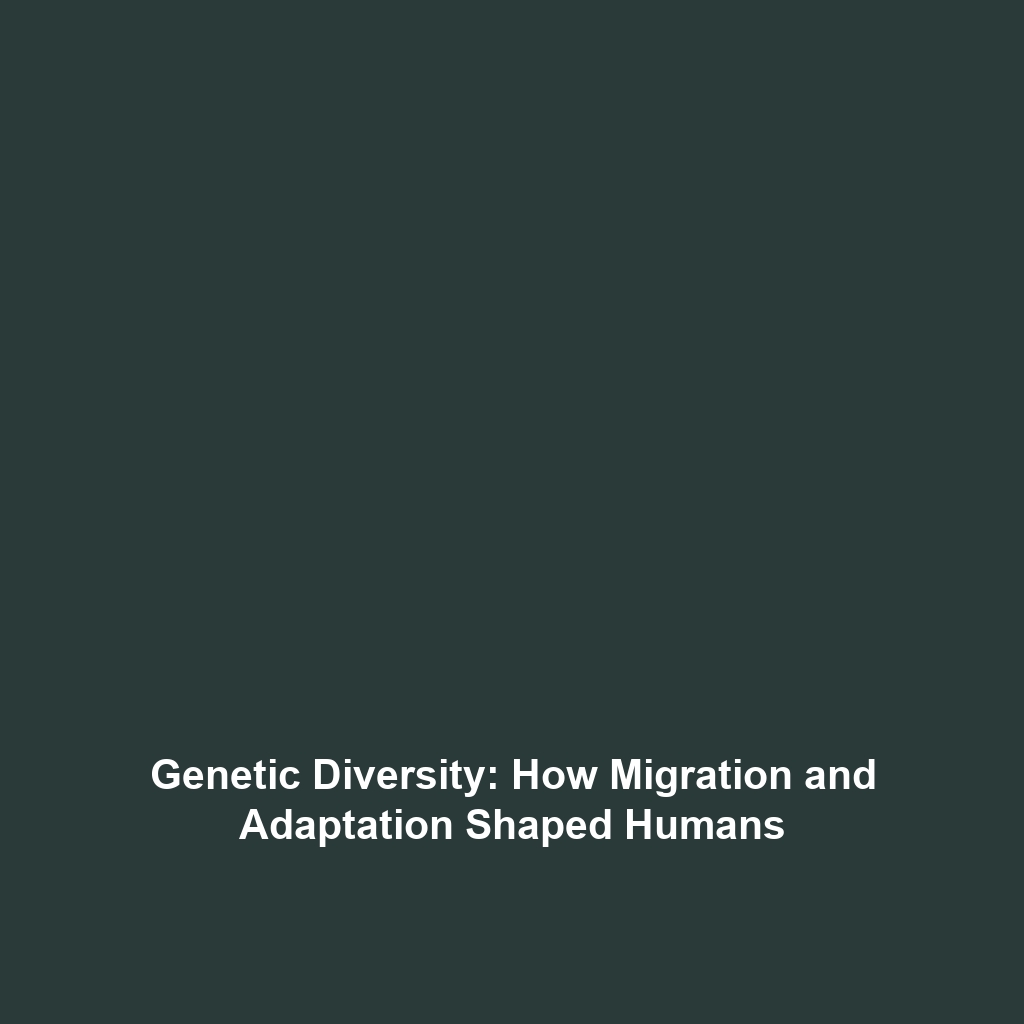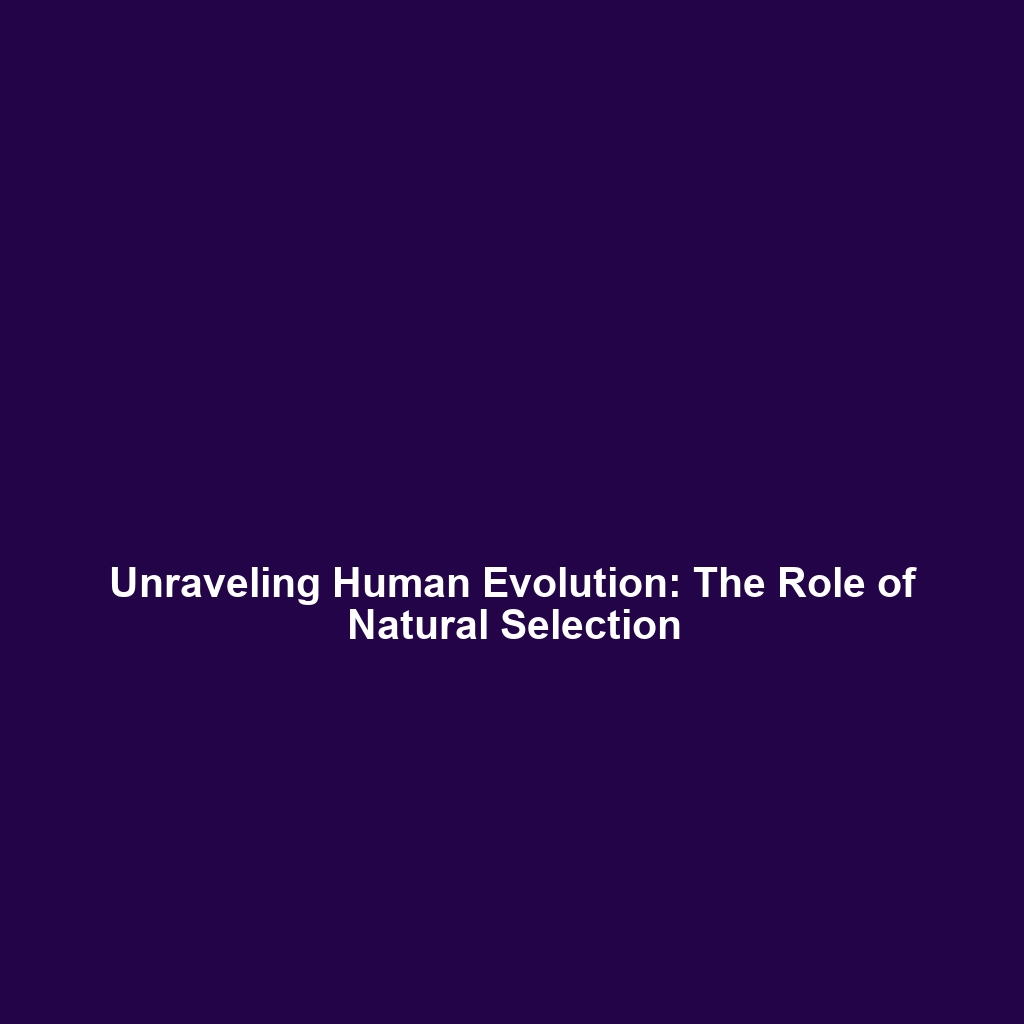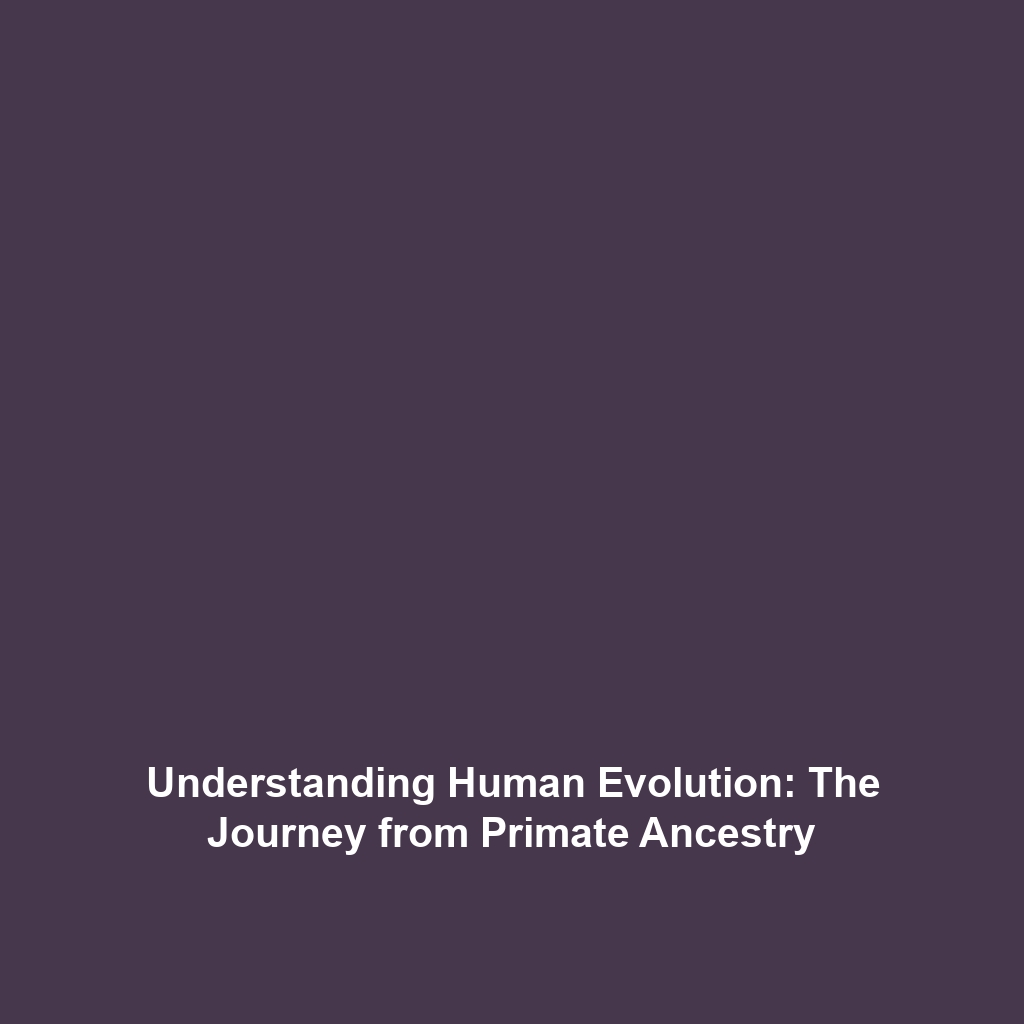The Modern Synthesis: Integrating Darwinian Evolution with Genetics
Modern Synthesis is a groundbreaking theory in evolutionary biology that merges Charles Darwin’s principles of natural selection with the principles of genetics. This synthesis elucidates how evolutionary mechanisms operate at both genetic and population levels. Its significance is paramount in understanding the evolutionary history of humans and other organisms, as it encompasses crucial concepts that explain how species evolve over time. This article delves into the Modern Synthesis, its key concepts, applications, challenges, and future research implications related to human evolution.
Key Concepts
The Modern Synthesis integrates several key principles, making it a cornerstone in the field of evolutionary biology and a vital component of understanding human evolution. Major concepts include:
- Natural Selection: The process by which organisms better adapted to their environment tend to survive and reproduce more than others.
- Genetics and Heredity: The study of genes and genetic variation, crucial for understanding how traits are passed through generations.
- Population Genetics: The examination of genetic variation within populations and how it changes over time, influenced by evolutionary forces.
- Speciation: The formation of new and distinct species in the course of evolution as a result of genetic divergence.
These concepts collectively enhance the understanding of how evolutionary processes operate, not only in humans but across all species, grounding the field of human evolution in a robust scientific framework.
Applications and Real-World Uses
The applications of Modern Synthesis extend beyond theoretical frameworks, impacting various fields related to human evolution. Understanding how evolutionary processes work leads to significant practical uses:
- Conservation Biology: Strategies that rely on genetic diversity help in preserving endangered species.
- Medicine: Advances in genetics lead to better understanding of diseases and the evolution of pathogens.
- Anthropology: Insights from evolutionary biology assist in studying human ancestry and migration patterns.
These examples highlight how the Modern Synthesis is applied in understanding human evolution, demonstrating its relevance in both academic and practical contexts.
Current Challenges
Despite its significance, the Modern Synthesis faces several challenges that researchers must consider:
- Integration of New Discoveries: Advances in evolutionary developmental biology (evo-devo) challenge traditional views.
- Complex Genetic Interactions: Understanding polygenic traits and their environmental interactions can be difficult.
- Application in Rapidly Changing Environments: Predicting evolutionary responses in rapidly changing conditions poses uncertainties.
These challenges highlight ongoing issues in both the application and understanding of the Modern Synthesis in the context of human evolution.
Future Research and Innovations
The future of research surrounding the Modern Synthesis looks promising, with numerous innovations on the horizon. Potential areas of exploration include:
- CRISPR Technology: Gene editing may provide meaningful insights into evolutionary processes.
- Climate Change Impacts: Studying how species adapt to changing environments will deepen understanding of selective pressures.
- Genomic Studies: High-throughput sequencing technologies offer insights into genetic variation and evolutionary history.
Such innovations are likely to drive meaningful advancements in comprehending human evolution and broader biological processes.
Conclusion
In summary, the Modern Synthesis represents a critical framework in understanding evolutionary processes, integrating Darwin’s concepts with genetics and firmly establishing its relevance in human evolution. As we continue to explore and address challenges, as well as develop new research avenues, the insights gained will undoubtedly influence future explorations in this pivotal field. To learn more about related topics in human evolution, consider exploring pages on natural selection, genetics in evolution, and anthropological studies.
